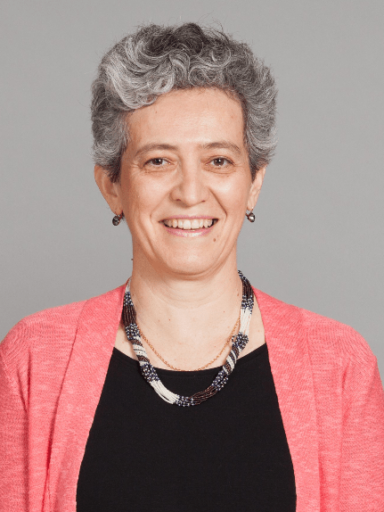The demands on a healthcare professional can quickly pile up.
Even after visiting patients, performing the necessary care and updating electronic health records, there’s administrative work to provide documentation for insurers and public payers and to fulfill regulatory requirements. Long shifts are the norm.
 Pascale Carayon
Pascale Carayon
So it’s no surprise that various studies have shown the rate of doctors and nurses who exhibit significant symptoms of burnout is between 35% and 54%, with medical students and residents polling higher yet. And, not surprisingly, clinician burnout correlates with a higher risk of medical errors and negative interactions with patients.
“Clinician burnout is experienced by people, and the solution is in the work system that’s around people,” says Pascale Carayon, the Leon and Elizabeth Janssen Professor in the Department of Industrial and Systems Engineering at the University of Wisconsin-Madison.
As an expert in healthcare systems design and patient safety, Carayon was a natural fit to co-chair a National Academies of Sciences, Engineering, and Medicine committee examining clinician burnout and well-being.
The committee released its report at an October 23, 2019, event in Washington, D.C. Carayon also published an article summarizing the committee’s work and recommendations in the Journal of the American Medical Association, along with co-chair Christine Cassel of the University of California, San Francisco, and Victor Dzau, president of the National Academy of Medicine. Carayon shared her perspective in an audio interview with the journal.
The committee’s report identifies six broad goals that all levels of the healthcare system—not just healthcare organizations, but federal regulators, the Centers for Medicare and Medicaid Services, insurers, educational institutions and health information technology vendors—should work toward:
- Build positive work environments to promote well-being, including creating leadership roles dedicated to the issue, monitoring burnout levels within the organization and considering the impact of management decisions on burnout.
- Address burnout in school and early in careers by monitoring workload, improving scholarship and loan access and developing new loan repayment options.
- Curb the administrative burden by assessing laws, regulations and policies to address sources of burnout and understand their impact on patient care.
- Improve the usability and relevance of technology solutions, involving clinicians in human-centered design practices and promoting the flow of information throughout the healthcare system.
- Reduce the stigma of burnout by creating policies and laws that protect clinicians’ personal health information and improving access to resources such as employee assistance programs, peer support offerings and mental health services.
- Develop a coordinated national research effort to study the sources and consequences of burnout and examine the efficacy of potential systems-level strategies.
To date, research on the topic has focused predominantly on programs that treat clinicians on an individual basis—mindfulness, stress management or resilience training, for example—rather than more comprehensive approaches, Carayon says.
“Clinician burnout is embedded in the way healthcare organizations are structured,” Carayon says. “Focusing on the individual may sound like a good solution, but it’s not going to be sufficient. We’ve got to figure out how to get to some of the more intrinsic structural, organizational features of how healthcare is delivered.”